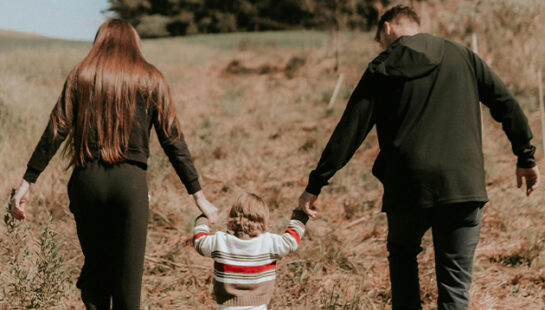Australia, 21 April 2022: A new report from Baptist World Aid reveals that some of Australia’s most beloved clothing brands and retailers have failed to make any significant progress to improve the lives and conditions of garment workers in the ten years since the Rana Plaza factory collapse.
The 2013 Rana Plaza disaster killed 1,130 Bangladeshi workers in one of the deadliest industrial accidents in history. That same year, Baptist World Aid started the Ethical Fashion Report to drive change through public scrutiny. The 2022 report critiqued 120 companies representing almost 600 brands, with this 2023 special edition tracking performance and changes from 25 companies assessed from 2013 to 2022.
These companies are still only reaching an average ethical benchmark of 43.6/100, with areas of greatest progress including policy development, supply chain tracing, and transparency.
Analysis that modelled the pace of change of these 25 companies over the current progress of the full cohort of 120 revealed that the industry is decades away from delivering on ethical goals. For example, paying a living wage at a minimum of one factory per company won’t happen until the turn of the century in 2098.
Baptist World Aid’s new analysis of ethical changes across 25 companies since Rana Plaza disaster predicts at current pace of change it will take Australia’s fashion industry:
- 75 years for all companies to pay a living wage at a minimum of 1 factory each.
- 30 years for all companies to achieve traceability of more than 75% of raw materials and fibre producers.
- 17 years before all companies make grievance mechanisms available to workers at a minimum of 1 factory each.
Soberingly, some of the actions that would do the most to prevent another major disaster are still years away. The ability for garment workers to raise grievances at just one factory for each of the companies assessed isn’t predicted until 2040, despite this being a key factor at Rana Plaza with workers aware of safety issues in the factory but unable to anonymously raise concerns without fear of retribution.
Their analysis also found the industry is 30 years away from all companies tracing a minimum of three quarters of their raw materials suppliers, which is a basic step towards addressing modern slavery. The raw materials tier is the highest risk area for modern slavery in the fashion supply chain, and without this visibility of where their cotton and other fibres come from, companies cannot put in place measures to prevent and address exploitation.
What improvements have been made?
Advances in policy development, supply chain tracing, and transparency have led to 84% of the 25 companies assessed having a form of Responsible Purchasing Practices in place (vs. 40% in 2013) and 80% having a publicly published list of some or all final stage suppliers (vs. 24% in 2013).
Improvements in supply chain tracing and other ethical sourcing initiatives do see this cohort outpace the broader fashion industry by 11 points, with the full group of 120 companies assessed in 2022 averaging 29/100 – demonstrating the positive impact of transparency, industry benchmarking and consistent public scrutiny.
When it comes to workers, 84% of the 25 companies assessed in both 2022 and 2013 now have a Code of Conduct aligned to international best practice standards on workers’ rights, such as elimination of child labour, freedom of association, and the right to collective bargaining, up from just 28% in 2013.
Why isn’t this enough?
Moving policies beyond paper and into practice paints a bleaker picture of progress.
Sarah Knop, Advocacy Manager at Baptist World Aid, said that fashion companies can no longer hide behind their policies and public commitments. “It’s been 10 years since the Rana Plaza collapse devastated the families of garment workers in Bangladesh and awoke shoppers to the exploitation faced by the people who make our clothes. But there remains a huge gap between what companies have committed to on paper and what change is actually happening for workers”.
Garment workers interviewed shed light on why policies don’t go far enough:
Aleya, 35, from Bangladesh said “most of the factories I worked in had child labour. When the buyers or compliance officers visited the factory, they used to hide all the children on the roof or in some rooms. The factories gave them the same salary as a helper, but the supervisors would verbally abuse them and make them work overtime.”
“I worked long hours and then overtime and sometimes overnight. There was a lot of pressure to get things finished. It was possible to go to the toilet and have a drink of water, but we had to be very quick, otherwise the supervisors would shout at us” added Layla, a Bangladesh garment worker.
“The simple fact is that policies must be backed by proof of action, otherwise the problem will continue to worsen as it has done for the past decade,” Knop said. “50 million people now live in modern slavery, compared to 30 million in 2013, with the fashion industry a major contributor.”
“Australians are some of the world’s biggest consumers of clothing, on average purchasing 14.8kg or 56 items of new clothing per year,” Knop said. “We invite the public to use their power to help push the fashion industry to become one that respects its workers and the planet by using our Speak Out tool, which enables shoppers to send pre-written emails to brands, imploring them to do better.”
Which companies have made the most progress?
While much remains to be done, it’s not all terrible news: some Aussie brands, including Kmart and David Jones, have made some improvements since 2013, ranking in the top 5 most improved.
Most improved companies from 2013
- Kmart: 2013 D, 2022 Top 20%
- Lacoste: 2013 F, 2022 Top 40%
- David Jones: 2013 F, 2022 Top 40%
- Lululemon: 2013 C-, 2022 Top 20%
- VF Corp: 2013 C+, 2022 Top 20%
Least improved companies from 2013
- Forever 21: 2013 D-, 2022 Bottom 20%
- Abercrombie & Fitch: 2013 D+, 2022 Bottom 40%
- Sussan Group: 2013 C-, 2022 Middle 20%
- Myer: 2013 D+, 2022 Middle 20%
- Cue Clothing Co: 2013 B, 2022 Middle 20%
ENDS
For more information and any media enquiries please contact:
Bebe Dragovitch | 0401 921 028 | [email protected]
Morgan Griffin | 0415 216 206 | [email protected]
Notes to editors
Methodology
The Special Edition Ethical Fashion Report is a comparison of existing data sets examining company progress since the publication of the first Ethical Fashion Report in 2013. The findings examined in this report are based on previously conducted research published in the 2013 Australian Fashion Report and the 2022 Ethical Fashion Report. Both reports were produced by Baptist World Aid.
For the projections: Baptist World Aid analysed the pace of change for the 25 companies assessed consecutively between 2013 and 2022. The projections referenced use the 2022 results from the full 120 company cohort as a baseline, and work from the assumption that this cohort could mirror a similar pace of change to the 25-company microcosm.
ABOUT BAPTIST WORLD AID AUSTRALIA
With its mission to end poverty, Baptist World Aid Australia has published the Ethical Fashion Report since 2013. As one of Australia’s leading publications on ethical fashion, the Ethical Fashion Report and Guide helps consumers make better choices based on thorough data from 120 companies representing almost 600 brands.
Baptist World Aid Australia was established in 1959 and continues to work toward ending poverty through 68 projects working with 27 local partners in 34 countries.



 Melissa Lipsett,
Melissa Lipsett,

 Heather Keith,
Heather Keith,